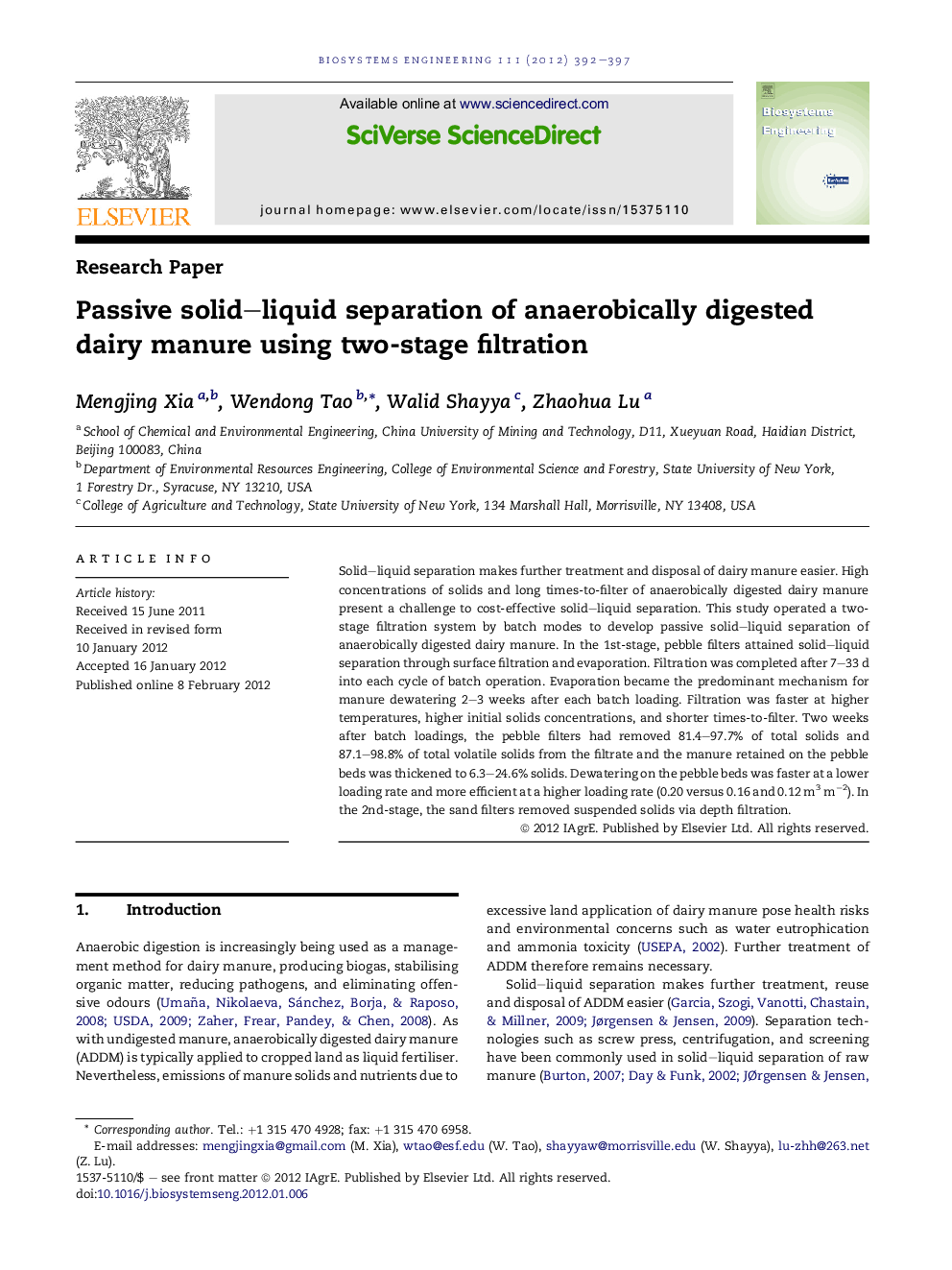| Article ID | Journal | Published Year | Pages | File Type |
|---|---|---|---|---|
| 1711528 | Biosystems Engineering | 2012 | 6 Pages |
Solid–liquid separation makes further treatment and disposal of dairy manure easier. High concentrations of solids and long times-to-filter of anaerobically digested dairy manure present a challenge to cost-effective solid–liquid separation. This study operated a two-stage filtration system by batch modes to develop passive solid–liquid separation of anaerobically digested dairy manure. In the 1st-stage, pebble filters attained solid–liquid separation through surface filtration and evaporation. Filtration was completed after 7–33 d into each cycle of batch operation. Evaporation became the predominant mechanism for manure dewatering 2–3 weeks after each batch loading. Filtration was faster at higher temperatures, higher initial solids concentrations, and shorter times-to-filter. Two weeks after batch loadings, the pebble filters had removed 81.4–97.7% of total solids and 87.1–98.8% of total volatile solids from the filtrate and the manure retained on the pebble beds was thickened to 6.3–24.6% solids. Dewatering on the pebble beds was faster at a lower loading rate and more efficient at a higher loading rate (0.20 versus 0.16 and 0.12 m3 m−2). In the 2nd-stage, the sand filters removed suspended solids via depth filtration.
► 2-stage filtration for passive solid–liquid separation of anaerobically digested dairy manure. ► 1st-stage pebble filters attain separation via surface filtration and evaporation. ► Filtration and dewatering were affected by temperature and time-to-filter. ► Separation was more efficient at a higher loading rate. ► 2nd-stage sand filters further remove suspended solids via depth filtration.
